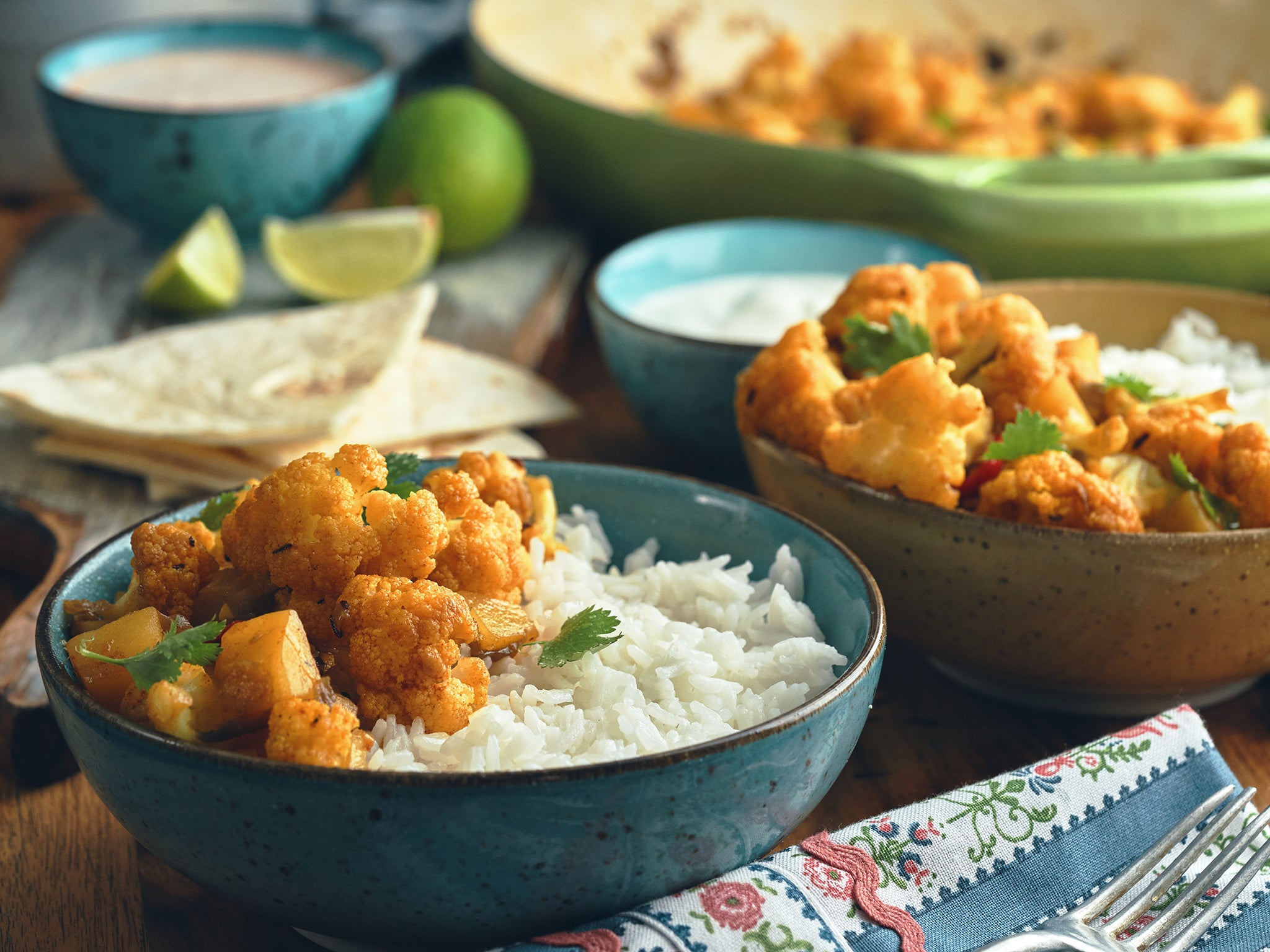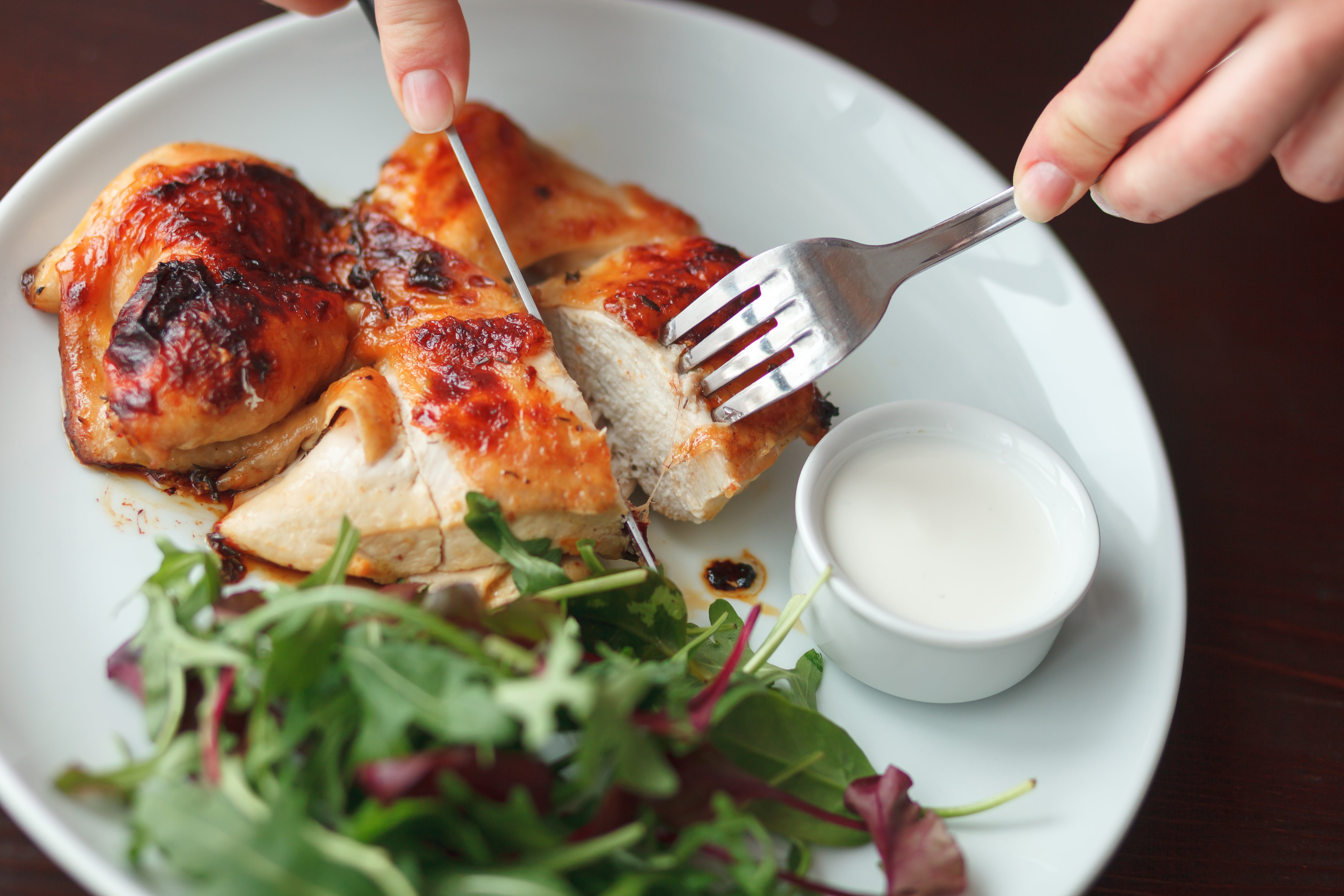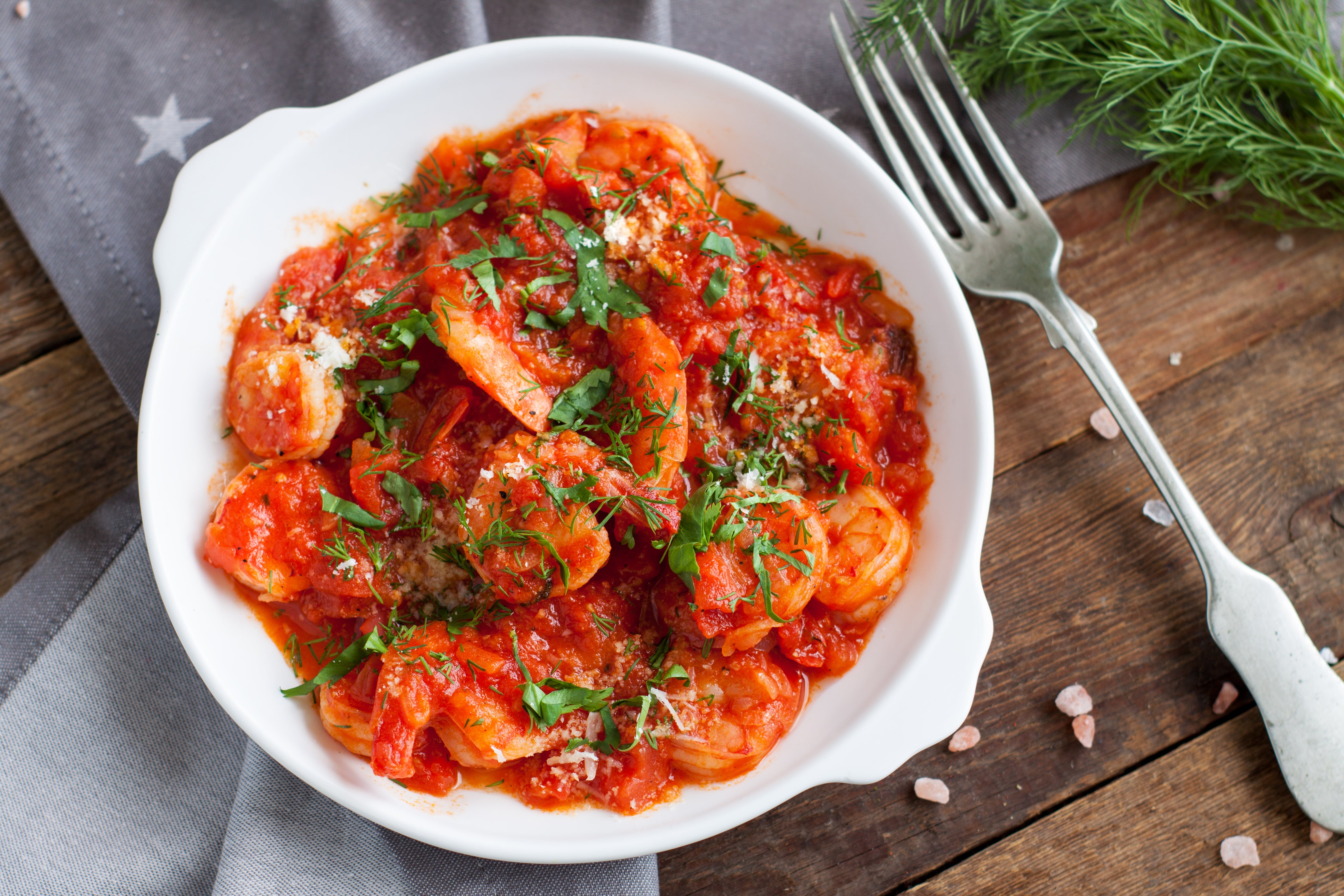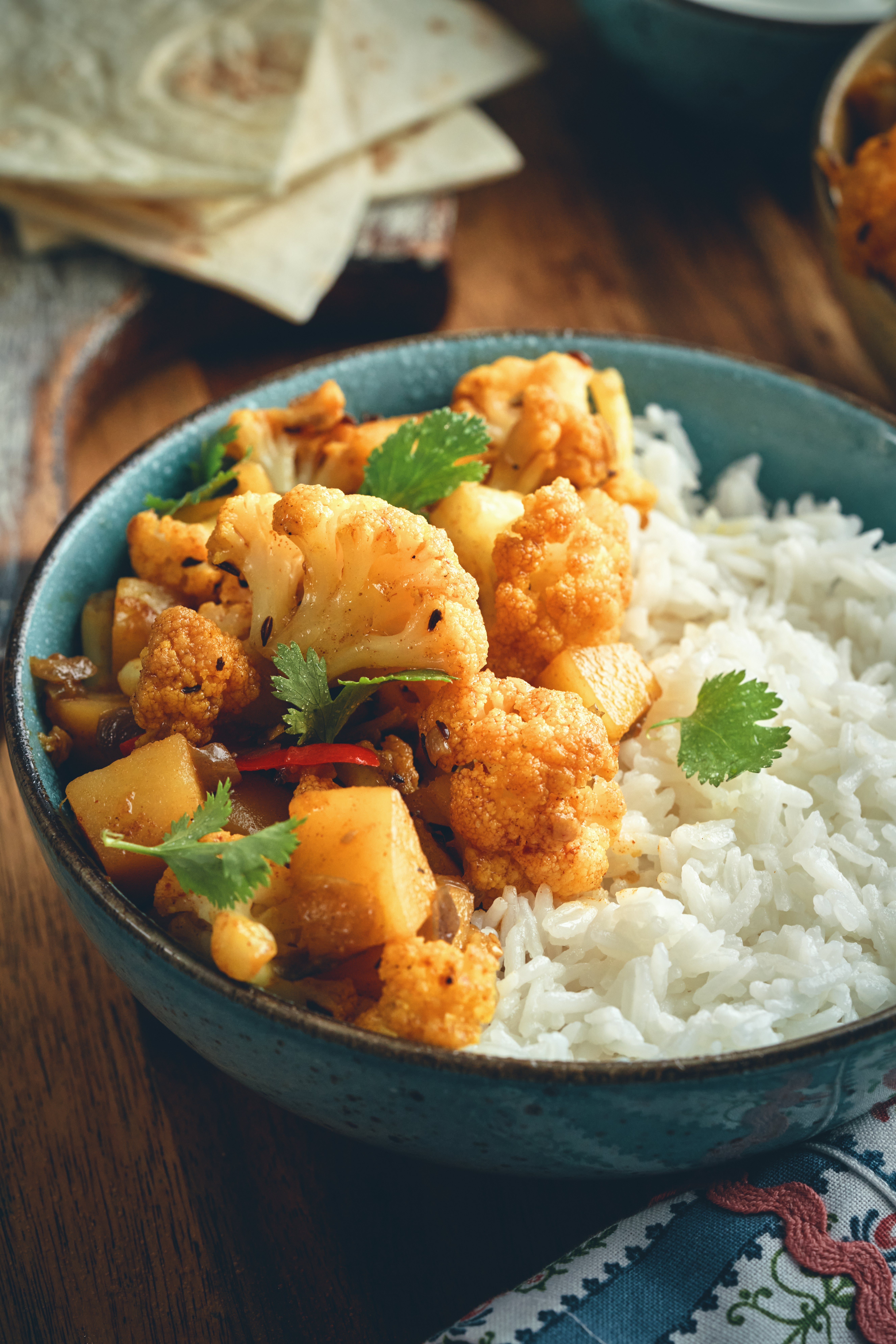Four fun dinners to keep you going through February
Emily Weinstein shares what she’ll be cooking this week

Your support helps us to tell the story
From reproductive rights to climate change to Big Tech, The Independent is on the ground when the story is developing. Whether it's investigating the financials of Elon Musk's pro-Trump PAC or producing our latest documentary, 'The A Word', which shines a light on the American women fighting for reproductive rights, we know how important it is to parse out the facts from the messaging.
At such a critical moment in US history, we need reporters on the ground. Your donation allows us to keep sending journalists to speak to both sides of the story.
The Independent is trusted by Americans across the entire political spectrum. And unlike many other quality news outlets, we choose not to lock Americans out of our reporting and analysis with paywalls. We believe quality journalism should be available to everyone, paid for by those who can afford it.
Your support makes all the difference.I have to tell you the truth: I did not want to write you about chicken this week (no offence to the chicken below, which is great). I wanted to write to you about desserts, because in the middle of February, I find it more enthralling to think about cake than weeknight cooking.
But we need to eat dinner, and I’ve actually been cooking a ton lately (and I promise I’ll do a dessert edition soon).
Pasta with feta and green olives
Bold, briny and tangy, this 15-minute pasta is full of personality. Olives are first slightly blistered in oil, drawing out their brininess, then crumbled feta is stirred into the pasta at the end until melty. Keep the feta chunky when breaking it apart so that the squares become soft and creamy, tasting almost baked. Castelvetrano olives are best here for their meaty texture and gentle flavour, but you can also use your preferred olive. Smash them with the flat side of a chef’s knife – or even the heel of your palm in a pinch – then use your fingers to pluck the olive flesh off the pit. Any stubborn meat clinging to the pit is fair game to be eaten then and there.
By: Yasmin Fahr
Serves: 4
Total time: 20 minutes
Ingredients:
Salt
450g dried cavatappi, fusilli or other short, curly noodle
80ml olive oil
340g green olives, such as Castelvetrano or Cerignola, smashed and pitted
1 garlic clove, grated or minced
1 lemon, zested and juiced (about 1 tbsp zest and 3 tbsp juice)
½ tsp red-pepper flakes, plus more as desired
Loosely crumbled or cubed feta, depending on preference
Black pepper
Method:
1. Bring a large pot of salted water to a boil. Add the pasta and cook at a gentle boil until al dente, about 2 minutes less than the package instructions.
2. Meanwhile, in a saucepan or frying pan, heat the oil over medium-high until shimmering. Add the olives, cooking until they start to blister in spots, 2 to 3 minutes. Remove from the heat, then add in the garlic, lemon zest and red-pepper flakes, stirring constantly for about 30 seconds, then let sit uncovered until the pasta is finished.
3. Reserve 1 cup pasta water, drain the pasta, then return it to the pot over medium-low heat. Pour in the olive mixture, the lemon juice and ¾ cup pasta water, and stir well for 1 to 2 minutes until the noodles are coated in a smooth, glossy sauce, adding more water if needed. Turn off the heat, stir in the feta and let it soften and melt slightly. Finish with a grind or two of black pepper and a sprinkle of red-pepper flakes, if desired. Season to taste with salt, and serve immediately.
Pan-seared ranch chicken

In this recipe, America’s favourite salad dressing serves double-duty: as a creamy, herbaceous sauce and as a marinade. But don’t reach for bottled ranch. Instead, make your own brighter, tangier version using Greek yoghurt. Unlike lemon or vinegar-based marinades, which can toughen meat, yoghurt tenderises even the leanest of chicken breasts. When the chicken is seared in a hot pan, the yoghurt-mayo coating forms a flavourful, caramelised crust (it also makes an excellent marinade for fish, pork, shrimp or sturdy vegetables).
By: Ali Slagle
Serves: 4
Total time: About 35 minutes
Ingredients:
180g Greek yoghurt
60g mayonnaise
3 tbsp finely chopped fresh chives, or ½ tsp dried, plus more for serving
3 tbsp finely chopped fresh dill or parsley (or ½ tsp dried), plus more for serving
¾ tsp garlic powder
Salt and black pepper
680-900g boneless, skinless chicken breasts or thighs
2 tbsp extra-virgin olive oil
Method:
1. In a measuring cup or small bowl, stir together the yoghurt, mayonnaise, chives, dill and garlic powder; season with 1½ teaspoons salt and a few grinds of pepper. Transfer half the ranch to a medium bowl.
2. Pat the chicken dry. If thickness varies greatly, pound to an even thickness of about 1½cm. Season both sides with salt and pepper, then transfer the chicken to the medium bowl with the ranch and toss to coat. Let sit at least 15 minutes, or refrigerate overnight (let it come to room temperature before cooking).
3. Heat the oil in a large (30cm) nonstick frying pan over medium-high. Working in batches if necessary, cook the chicken (with the marinade still on it) until deeply caramelised on the outside and its juices run clear, 4 to 6 minutes per side. Turn down the heat if the chicken is browning too quickly.
4. If the ranch in the measuring cup is too thick, add a little bit of water to loosen it (you should be able to drizzle it easily). Serve chicken with the ranch passed at the table, and more herbs as desired.
Prawns in purgatory

This one-frying pan prawn dish is inspired by the bright flavours of eggs in purgatory, the classic southern Italian dish in which eggs simmer in a spicy tomato sauce. The exact origins of the name are uncertain, but many say the sauce is meant to represent purgatory, and the eggs, souls. Here, prawns stand in for the eggs, and the tomato sauce is rich and tangy, with roasted red peppers and capers. You can use frozen prawns; just defrost them first. Serve the prawns in shallow bowls, with crusty bread, or over orzo, couscous or polenta.
By: Sarah DiGregorio
Serves: 4
Total time: 25 minutes
Ingredients:
3 tbsp olive oil
1 yellow or red onion, minced
Salt and black pepper
8 garlic cloves, minced
1 tsp dried oregano
½-1 tsp red-pepper flakes, plus more for serving
½ tsp fennel seeds
2 tbsp minced jarred Calabrian chillies or minced jarred cherry peppers, stems removed, or cherry pepper relish
225g roasted red peppers, drained and chopped
1 (400g) tin whole or chopped tomatoes
450-680g peeled, deveined prawns
2 spring onions, thinly sliced
1 tbsp capers, drained
Grated parmesan
Method:
1. Warm the olive oil in a 30cm frying pan over medium-high. Add the onion, season generously with salt, and cook, stirring, until the onion is translucent, soft and starting to turn golden, 7 or 8 minutes. If necessary, decrease the heat to medium to prevent scorching.
2. Add the garlic and cook until fragrant and softened, about 2 minutes. Stir in the oregano, red-pepper flakes and fennel seeds, then the Calabrian chillies, roasted red peppers and tomatoes (crush the tomatoes by hand, if using whole). Season with salt and pepper. Bring to a simmer, adjust the heat to maintain a simmer, and cook for about 5 minutes to slightly reduce the sauce and blend the flavours.
3. Add the prawns, spring onions and capers, and cook until the prawns are curled, pink and opaque, 3 to 7 minutes, depending on size and quantity. Turn off the heat and taste the sauce. Add more red-pepper flakes, salt and pepper, if you like. Sprinkle the cheese over the top and serve, passing more parmesan and red-pepper flakes at the table.
Cauliflower, cashew, pea and coconut curry

While this curry from Meera Sodha’s cookbook Made in India is rooted in tradition and complexly flavoured, it’s also easy enough for a weeknight. She transforms cauliflower from a humble vegetable to a rich centerpiece with the addition of cashews, coconut, fresh ginger and a flurry of spices you’re likely to have in your pantry. Serve with rice for an exceptionally good vegan supper.
Recipe from: Meera Sodha
Adapted by: Jennifer Steinhauer
Serves: 4
Total time: 45 minutes
Ingredients:
1 (2.5cm) piece fresh ginger, peeled and chopped
4 garlic cloves, chopped
1 green chilli, roughly chopped (seeded if you prefer less heat)
Salt
4 tbsp canola oil
2 large onions, finely chopped
1 tbsp tomato paste
1½ tsp ground coriander
1¼ tsp ground cumin
½ tsp chilli powder
1 large head cauliflower (about 570g), broken into bite-size florets
1 (400g) tin unsweetened coconut milk
115g unsalted cashews
68g frozen peas
½ tsp garam masala
1 small bunch coriander, leaves chopped, for serving
1 lemon wedge, for serving
Cooked basmati rice, for serving
Method:
1. Place the ginger, garlic and green chilli in a mortar and pestle with a pinch of salt. Mash until a paste forms and set aside. Alternately, finely chop the ginger, garlic and green chilli together, sprinkle with a pinch of salt, then mash into a coarse paste using the flat portion of your chef’s knife.
2. In a large frying pan with a lid, heat 3 tablespoons oil over medium. Cook the onions until golden, about 10 minutes. Add the ginger paste and cook, stirring, until fragrant, 3 to 4 minutes.
3. Stir in the tomato paste, coriander, cumin, chilli powder and 1¼ teaspoons salt. Stir in the cauliflower and coconut milk and bring to a simmer. Reduce the heat to low, cover and cook until the cauliflower is tender, 10 to 12 minutes.
4. Meanwhile, heat the remaining 1 tablespoon oil in a small frying pan over medium. Fry the cashews, stirring occasionally, 2 minutes. Transfer to a plate to cool.
5. Add the peas and garam masala to the cauliflower mixture and cook, stirring, 5 minutes. Season to taste with salt.
6. Top the curry with the cashews, coriander and a squeeze of lemon just before serving. Serve with a big steaming bowl of basmati rice.
© The New York Times
Join our commenting forum
Join thought-provoking conversations, follow other Independent readers and see their replies
Comments